
During the PSP 8th perihelion, our contributing observatories took observations. We are collecting highlights of these observation here. If you have an observation you would like included, please send an image with an appropriate caption.
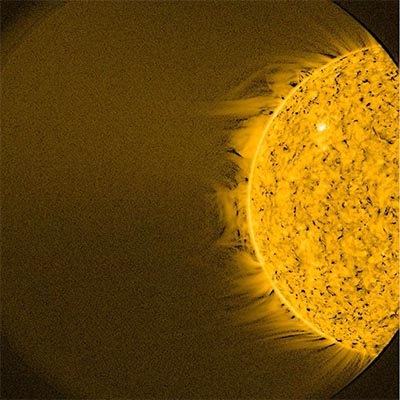
Movies in the 171 and 193 lines during the SDO off pointing in conjunction with the PSP 8th perihelion. SDO off-pointed from Sun center from 2100UT on April 28 to 1100UT on April 29, 2021.
 in bottom-right of video for full-screen.
in bottom-right of video for full-screen.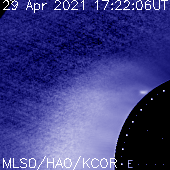
A 3 part-CME (loop, cavity, prominence core) was captured by the Mauna Loa Solar Observatory K-Coronagraph (K-Cor) on April 29, 2021. The slow-moving event was in-progress when K-Cor observations began at 17:21 UT. The prominence was first seen in K-Cor at position angle (PA) 35 degrees. The prominence was part of the polar crown filament, the highest latitude magnetic polarity inversion line adjacent to the northern coronal hole. The event trajectory was very non-radial, moving equatorward, driven by the pressure of the open magnetic flux from the adjacent coronal hole. The prominence expanded and faded against background coronal structures as it reached ~70 degrees PA at an apparent height below 2 solar radii. (MLSO Home Page)
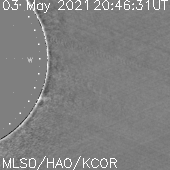
The Mauna Loa K-Coronagraph (K-Cor) recorded a 3-part CME (loop-cavity-core) on the west limb of the Sun on May 3, 2021 from 20:52 to ~22:43 UT. At the beginning of the eruption two loops (likely part of an arcade) were visible, a brighter loop from position angle ~239 to 266 degrees, and a fainter loop that extended south to 225 degrees position angle. The loops overlapped as the event moved outward, appearing as one broad structure in the optically thin corona. The CME front was moving at approximately 550 km/sec with a final acceleration of ~80 m/s^2 as it left the K-Cor field-of-view (FOV) at ~3 solar radii and appeared to be moving slightly equatorward.
The acceleration was decreasing as the event moved through the FOV. The core structure appears to disconnect, pinching down at its base to form an apparent wide “V” shape. A current sheet may be forming below the ‘V’ shape but is only visible for a short time. The ‘V’ shape and possible current sheet are best seen in subtractions. The overall width of the CME at 21:39:39 is ~120 degrees at 1.2 solar radii and is narrower, ~80 degrees, higher in the corona. The 80 degree width was measured at 1.65 solar radii.
The event may have originated slightly behind the west limb. An active region visible a day earlier had rotated over the west limb; no GOES X-ray event was recorded with this CME. (Additional movies | MLSO Home Page)
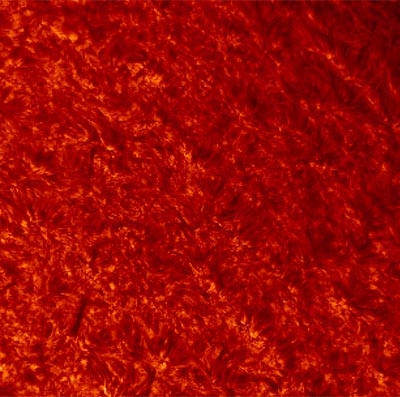
Halpha image taken at the Dunn Solar Telescope on May 6 with the new Andor Zyla sCMOS camera. The field of view is 180x180, approximately 800"W and -350" S, and targeted a coronal hole near the western limb. The spatial resolution is 0.09"/pixel. The image has been obtained with speckle reconstruction using 25 frames.
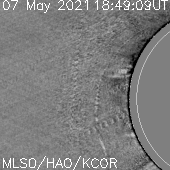
A fast, rapidly accelerating CME was recorded in the Mauna Loa K-Cor data from ~18:54 to 20:00 UT. Wide loop with ‘warp’ in the northern leg possibly due to rapid acceleration. Very large deflections. CME speed as it left the K-Cor field-of-view was 1100 km/sec with an acceleration of ~510 m/sec^2. Large deflections in adjacent coronal structures. A slower CME was in progress just north of the fast CME. High likelihood that the CME drove a shock. (MLSO Home Page)